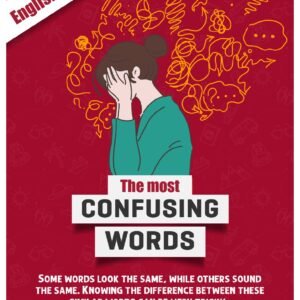Passive Voice and how to use it
Verbs can also be in the active voice or passive voice. In the active voice, the subject and verb relationship is direct.
In other words, the subject is performing the verb’s action, by either “doing” or “being” the object of the sentence. This is the “regular” voice that we typically use.
For example:
“The man ate a hamburger.” (the man [subject] did the eating of the hamburger [object])
“Bob sent the letter.” (Bob [subject] did the sending of the letter [object])
“My dad loves my mom.” (Dad [subject] is doing the loving of Mom [object])
In the passive voice, the subject of the sentence is neither “doing” nor “being” the object. The subject and object switch positions; the subject becomes the object and vice versa.
For example:
These active-voice sentences: “The man ate a hamburger,” “Bob sent the letter,” and “My dad loves my mom,”
Become:
→ “The hamburger was eaten by the man.”
→ “The letter was sent by Bob.”
→ “My mom is loved by my dad.”
The passive voice is often used when we want to put emphasis on the object rather than the subject. For example, in the sentence “My wallet was stolen last night,” although we might imagine the thief who stole the wallet, the passive construction emphasizes the wallet and the action itself.
The passive is also used when we don’t know the subject, or if the subject is not important and/or doesn’t need to be mentioned.
Construction of the Passive Voice
subject + am/is/are + past participle
The main verb is always in its past participle form. Take a look at the following table:
*NOTE: The word “by” is always used to introduce the passive object in the passive voice.
Conjugation of the Passive Voice
The passive can be used in any tense. The conversion from active to passive is an easy process, because the main verb is always in its past participle form and the auxiliary verb is always “to be.” The only verb that need be conjugated is the auxiliary verb.
For example:
Present simple: “Pizza is eaten every day.”
Present continuous: “Pizza is being eaten right now.”
Present perfect: “Pizza has been eaten by people all over the world.”
Teaching Verb Tenses
It is most effective to teach each tense in small, easily digestible amounts. This means that teachers should avoid teaching multiple aspects/tenses in a short period of time. Focus on one, comparing and contrasting it with tenses students already know. Trying to have students memorize and use multiple tenses at once is a recipe for disaster and will result in disengagement.
Introducing grammar points within authentic contexts is the most effective way to get students to understand meaning, use, and form.
For example:
To teach the present simple tense, students are given a scripted dialogue which the teacher reads aloud. The teacher tells students that the dialogue is between two friends who are discussing what they do on weekends. After reading, the teacher lists the action verbs used in the dialogue on the board:
go for a walk
eat lunch
study
do homework
go out
go to the mall
Students then read/listen to the text again to find out who is doing the above actions. After asking students for the answers, the teacher writes them on the board.
I go for a walk.
We eat lunch.
My brother and I go out on Saturdays.
I always do my homework.
The teacher uses a timeline, simple explanations, and comparisons to demonstrate the present simple tense in the positive form. Drills are then followed by students using the sentence structure to create examples which are written on the board. Drills are repeated and the teacher asks a series of concept check questions to ensure students understand the rules.
Students need to learn both affirmative and negative sentences using a variety of verbs in the new tense. Write model sentences on the board for them to visualize the sentence structure and use as references during class, such as:
“I wash the dishes every night.”
“I do not wash dishes every night.”
Introduce “yes/no” questions and “wh-” questions using various verbs in the new tense as well. Write model questions on the board for students to visualize, such as:
“Do you wash the dishes every night?”
“Can you make coffee?”
“What do you eat for breakfast?”
“When is the next class?”
Direct the questions to the students in the classroom. As they respond, encourage them to speak in complete sentences, and write their answers on the board, correcting their grammar if needed:
“No, I do not wash the dishes every night.”
“Yes, I make coffee for my dad.”
“I eat cereal for breakfast.”
“The next class is tomorrow.”
Compare two different verbs in the present simple tense on the board, in both the affirmative and negative sentences and yes/no/wh- questions, to give students a visual of how different types of verbs can be conjugated in that tense.
After drilling, provide a variety of controlled practice activities for students to practice using the form with guidance.
Once students have completed controlled exercises and have gained confidence and accuracy, less controlled exercises can be assigned to add a personal and meaningful dimension to the grammar tense.
Learning grammar, verb tenses, and parts of speech is a developmental process that requires continual practice and exposure before the concepts are understood and retained. It takes even longer for students to use them naturally and fluently.
It is essential for teachers not only to have students repeatedly practice using the structures when they are introduced, but to also recycle and integrate them into future lessons.









